As Mara Elephant Project officially ended our seventh year in operation, I reflect on how we’ve come such a long way from the shipping container and tent that used to be MEP’s headquarters. I’m amazed and proud of the continued donor support we receive, the success we continue to see on the ground by MEP, Kenya Wildlife Service (KWS) and Narok County Government (NCG) rangers, and the growth our organization has seen in 2018.
Arrests, Anti-Poaching and HEC Efforts
Our organization is successful because of our 38 rangers and I’m continually impressed with the great success our intelligence unit had in 2018. They have arrested, between January and December, with the help of our partners KWS and NCG, 38 poachers and recovered 356 kg of ivory. The MEP intelligence unit had back-to-back notable successes in March and April when they recovered 42 kg of ivory and arrested four suspects near the Kenya/Tanzania border. Through their intelligence gathered during this operation, they gathered that the ivory came from Tanzania. This leading them to July where the intelligence team employed three new intelligence gathering sources in Tanzania, which led to the arrest of four ivory middlemen and seizure of 48 kg of ivory that same month. I was also especially proud of a joint operation in June between the intelligence team and KWS in Naivasha where they set up a successful sting operation and arrested one suspect with 12 pieces of ivory weighing 41 kg and two leopard skins. We also had a notable arrest in December along with the KWS that will be highlighted soon in the December report. Of course, the intelligence unit was able to be more successful with their two new motorbikes generously donated by TUSK Trust.
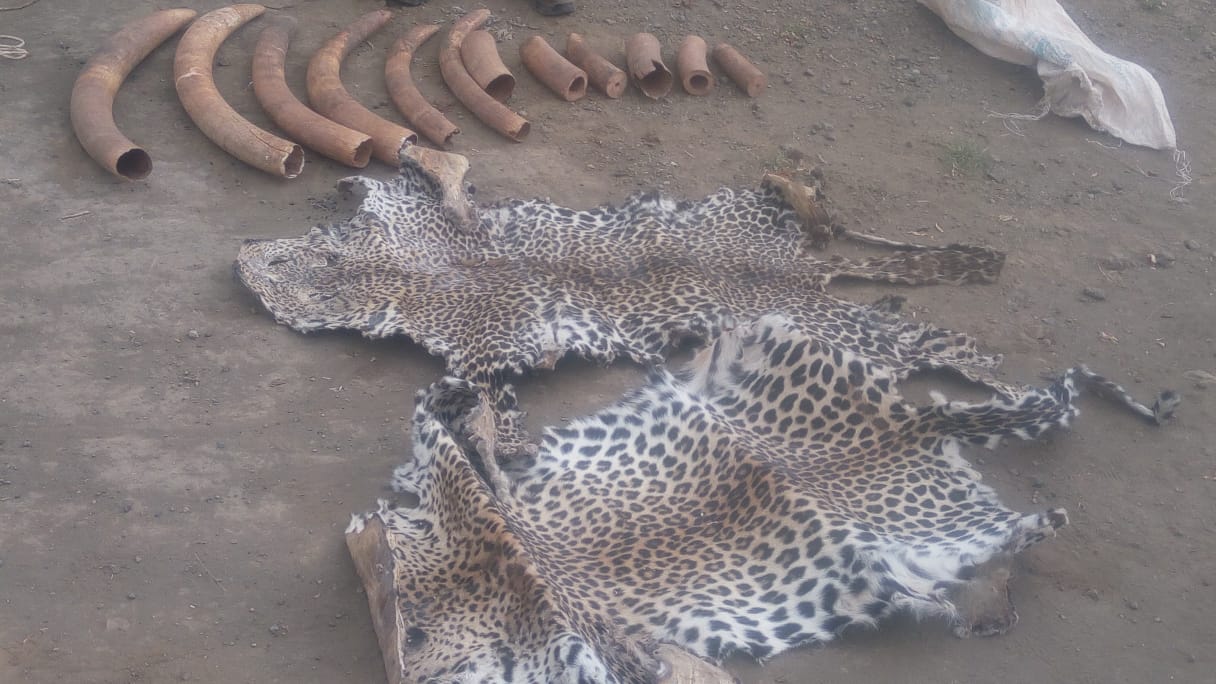
An arrest made by KWS using MEP intelligence that seized 41 kg of ivory and two leopard skins.
Our patrol units also continue to be successful in mitigating human-elephant conflict and removing harmful snares from the Mara ecosystem. They’ve removed 324 snares in 2018 and responded to 201 incidents of human-elephant conflict. We will continue to test the effectiveness of new mitigation techniques in 2018 like flashing light fences and collar alarms into 2019.
 Flashing light fences being installed around farms to keep elephants out at night.
Flashing light fences being installed around farms to keep elephants out at night.
Partnerships
MEP’s new partner in 2018, the David Sheldrick Wildlife Trust (DSWT), understands that where MEP rangers have a presence, all wildlife including elephants are better protected. This is why, in January, they invested in a new Mau Forest ranger unit that was tasked with removing snares, rooting out poachers and illegal logging operations and working with the bordering community to mitigate human-elephant conflict. The unit started operating in January and right away arrested one suspect with illegal bush meat. In February, the team received all of the camping equipment with sleeping bags and uniforms and by March and April they had passed basic training and received a new dedicated vehicle. I am extremely proud of the accomplished team MEP and DSWT put together with KWS, NCG and Kenya Forest Service to protect the Mau Forest. Currently, they’ve split up and are operating in two areas of the forest and continue to remove snares, root out poachers and shutdown illegal logging sites. One of the more touching moments from 2018 was when over 500 people showed up for this team’s graduation ceremony in May at the Emitik Forest station.
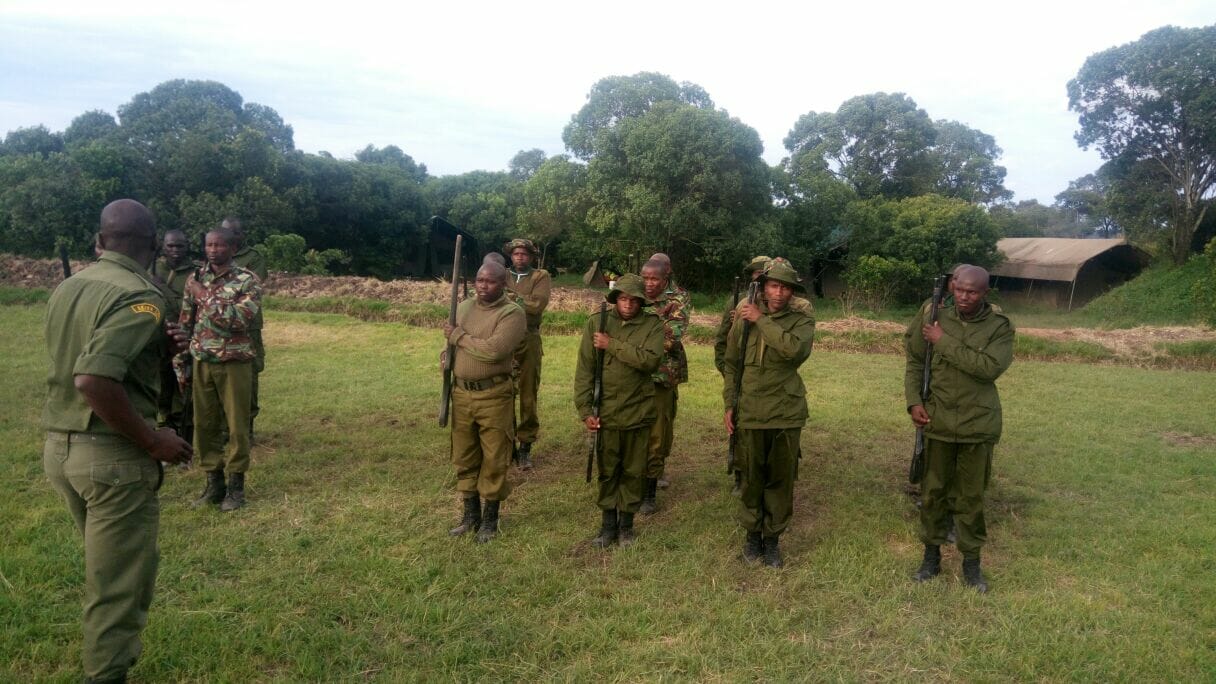 Basic training took place at MEP HQ in April.
Basic training took place at MEP HQ in April.
Other exciting partnership developments in 2018 include the re-branding of our core funder, the ESCAPE Foundation. They have officially changed their name to the Sidekick Foundation and though their focus remains the same, they are looking to capture more appropriately their belief in fulfilling their role as the sidekick to the next generation of conservation heroes. You can check out their new website at www.sidekickfoundation.org. They funded a film that continues to make waves here in Kenya called MABINGWA or The Champions. This movie, along with the groundbreaking research conducted by Well Told Story, has left its mark on the Kenyan youth. We continue to be grateful to the Sidekick Foundation that has been supporting Mara Elephant Project since the beginning.
New government and research organizations we partnered with in 2018 include the Singita Grumeti Fund and Tanzania Wildlife Research Institute (TAWIRI), both in Tanzania. In February, I was able to offer my collaring expertise and conducted a collaring operation in Tanzania that successfully collared 12 elephants all supported by the Grumeti Fund in Tanzania. The operation was a huge success and already the elephant movement data is illustrating their conflict issues along an expansive border with communities. This operation also gave us a chance to meet MEP’s counterpart in Tanzania and learn a lot about how they manage conflict in their area of operation. In addition, this is where we linked our head of intelligence with theirs and, as I mentioned previously, they’ve already formed a formidable team operating on both sides of the border. Additionally, in September, MEP worked with TAWIRI in the Selous Game Reserve in Tanzania. We collared a total of 13 elephants between September 4 and 11 to start to understand how elephants move inside this huge ecosystem. In addition to this main goal, it was also a great cross boundary team building exercise. I was impressed by the expertise of the TAWIRI team and it was a pleasure to work with them.

Collaring in Tanzania in September.
Mara Elephant Project partnered with Seedballs Kenya in 2018 to help reforest the Mara in some of the areas devastated by illegal charcoal production and logging. In October, we distributed 65 kg of seed balls that were donated directly for MEP and in November we took part in an operation that distributed over one million seed balls in the Mara.
We also would be remiss not to mention KWS vet Dr. Limo and his team from the DSWT Mara Mobile Vet Unit. Dr. Limo and company continue to be a consistent partner in the Mara to help us save elephant lives.
KWS Vet Dr. Limo during the collaring operation for Kegol in January.
Elephant Collaring Program
In 2018, MEP replaced two collar batteries that were due to expire. Kegol was successfully re-collared in January but due to his advanced age this will most likely be the last time he is collared. He’s an important breeding male and large tusker in the Mara ecosystem and is one of MEP’s known crop-raiders. Caroline was successfully re-collared in May. Caroline was collared in the Lemek Hills, an area prone to poaching before MEP along with our government partners KWS and NCG established a permanent team in the area. In addition to the two re-collar operations, we successfully collared elephant Julia in the Shampole area. MEP will focus on several elephants that have collar batteries due to expire in 2019.
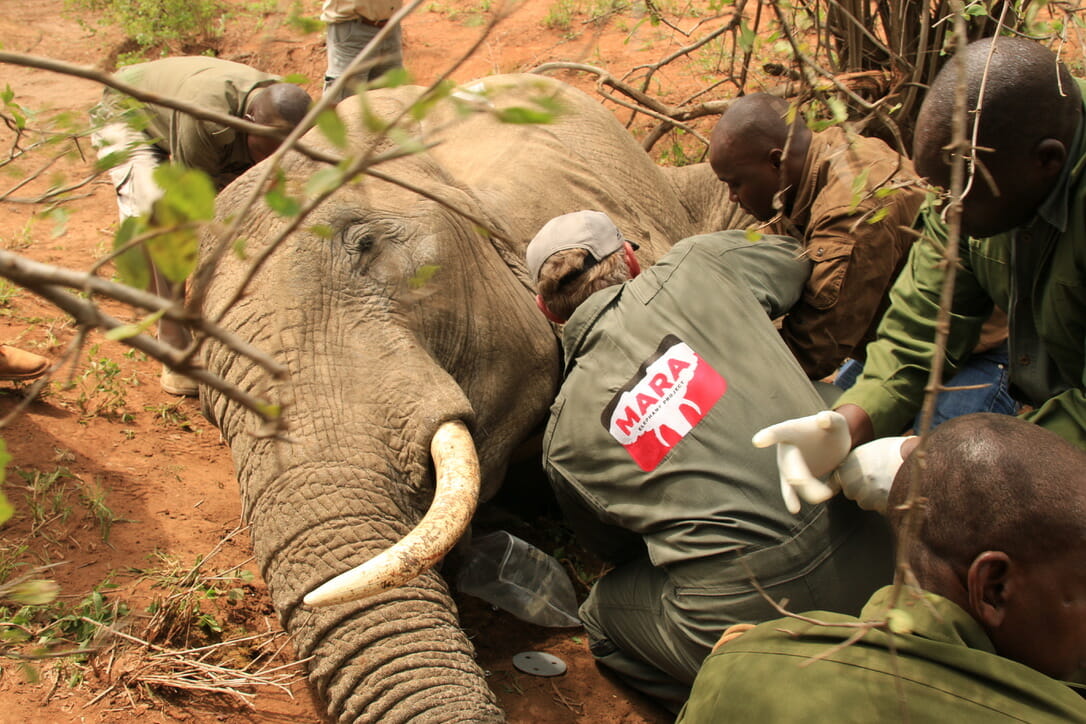
Julia’s collaring operation in March.
A main issue in 2018 has been the durability of MEP’s elephant collars. In terms of options for elephant collar manufacturers, there aren’t many commercially available. Our main collar hardware company since 2014 has collars that successfully report 98% of the time and have a reliable data delivery software system. Additionally, the durability of the original belting material stood up well to the elephant’s wear-and-tear. Unfortunately, in late 2017, they switched to using a thinner belt material that has proved to be significantly weaker than previously manufactured. Frustratingly, Lucy, Nancy, Earhart and Julia’s collars all dropped due to the durability issues and Amare’s collar stopped reporting due to water damage. We’ve been working with them to fix these issues and they have replaced the thin material with Kevlar, which seems to be holding up well on our Mau Forest elephant, Bettye.
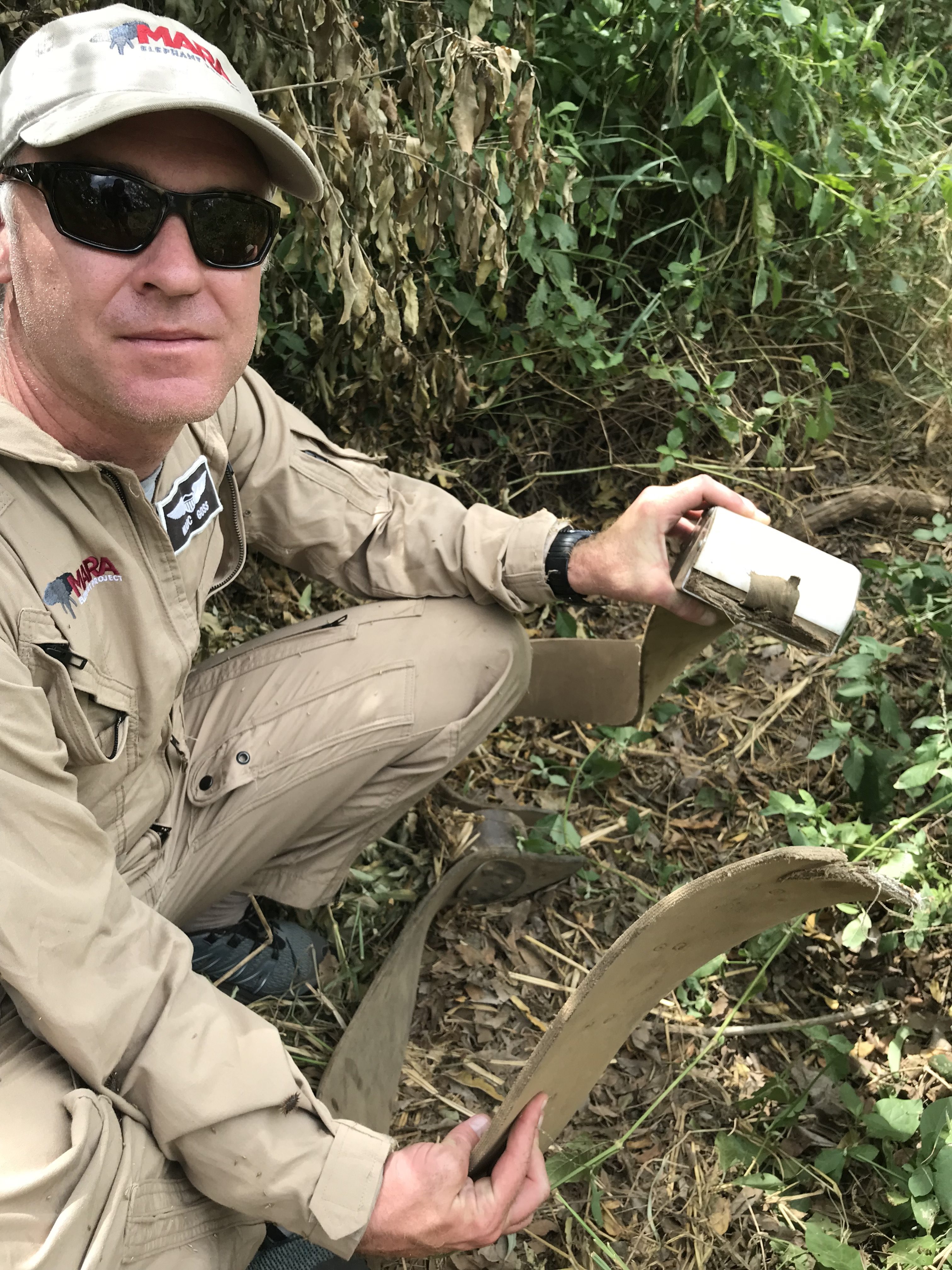 Julia’s collar malfunction found in November.
Julia’s collar malfunction found in November.
Fundraising and Communications
I can officially mark 2018 as the year where MEP raised the most money from organizations and individual donors. In February, we received the largest single donation ever, $350,000, from Karen Lo. This supported anti-poaching, human-elephant conflict and intelligence operations with direct support for: equipment purchase, ranger salaries, food rations for the combined MEP, KWS and NCG rangers, conflict mitigation tools, helicopter running time, vehicle running costs, and intelligence operations costs. MEP also received large individual donations from many involved supporters, and we were awarded grants by the OAK Foundation, the Angama Foundation, WildAid, TUSK Trust, Bently Foundation, Eden Wildlife Trust, and Asilia Giving. I am also always humbled by the support from grassroots donors on Facebook, Instagram and in fundraising efforts by Elephanatics and the students at Crooked Creek Elementary in Indianapolis, IN.
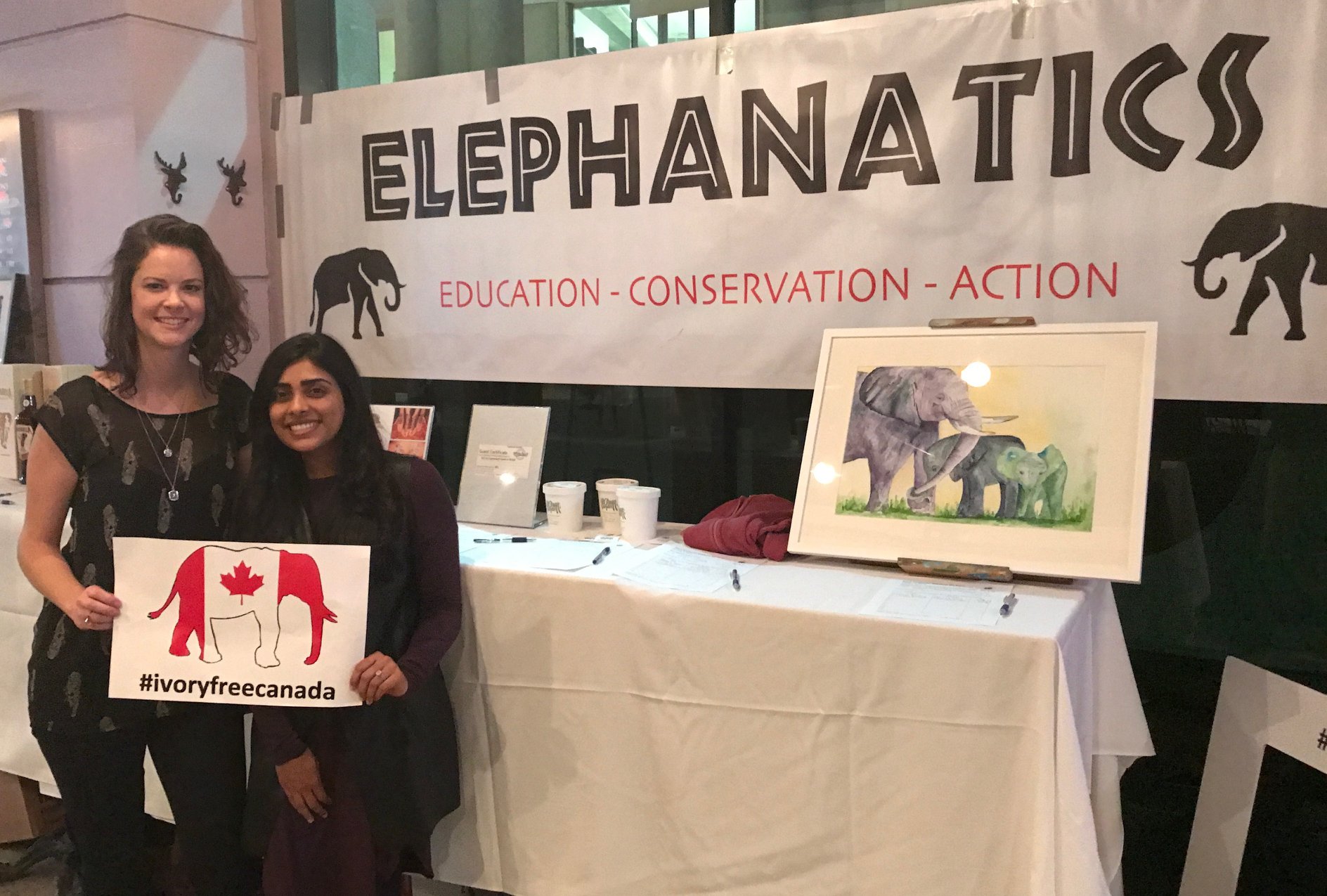 Two Elephanatics supporters that attended Pub Night to raise money for MEP in Canada.
Two Elephanatics supporters that attended Pub Night to raise money for MEP in Canada.
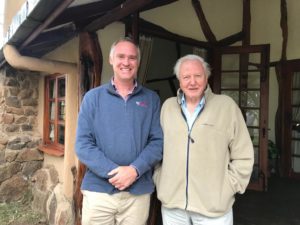 In terms of media, MEP hosted both Reuters and BBC for series that will air in 2019. We also were featured, thanks to Brett Velicovich, on Fox Business and were featured twice on the popular animal website, The Dodo, as well as Wired UK. All of this was really great, but, possibly the greatest media exposure was when me and Tracking Manager Wilson Sairowua were asked to do interviews for a documentary that will air on Netflix in 2019 narrated by Sir. David Attenborough. I got to meet Sir David (pictured left), who has been my hero since watching his documentary “Frogs” as a child. At 92 years old, he looked really good for his age and was as sharp and witty as he sounds on TV.
In terms of media, MEP hosted both Reuters and BBC for series that will air in 2019. We also were featured, thanks to Brett Velicovich, on Fox Business and were featured twice on the popular animal website, The Dodo, as well as Wired UK. All of this was really great, but, possibly the greatest media exposure was when me and Tracking Manager Wilson Sairowua were asked to do interviews for a documentary that will air on Netflix in 2019 narrated by Sir. David Attenborough. I got to meet Sir David (pictured left), who has been my hero since watching his documentary “Frogs” as a child. At 92 years old, he looked really good for his age and was as sharp and witty as he sounds on TV.
I’ve also been delighted by the traction we’re gaining on our two social media channels, Facebook and Instagram. We now have over 13,200 likes on Facebook and over 5,300 on Instagram. Our email list is now officially over 1,000 and continues to grow daily.
Staff & Trustees
One of the more exciting announcements is the addition of Dr. Jake Wall to the MEP staff full-time in 2019. Dr. Wall accepted the position of Director of Research and Conservation and will be responsible for: developing and maintaining MEP’s core research strategy; developing research partnerships with other organizations, academics and universities; liaising with key conservation partners such as KWS, Save the Elephants, Mara Predator Programme, DSWT and other relevant partners on research priorities; and exploring research/conservation funding options and assist the C.E.O. in funding applications. The results of the research will be used to develop reports and position papers to influence and guide management of the ecosystem. All outputs will be shared with MEP’s target audiences and co-authored by key partners KWS and NCG all aimed at raising awareness, facilitating more immediate input and action, informing and influencing policy and practice and developing closer working relationships with key partners. Dr. Wall is an architect of DAS, and elephant tracking system to track elephants in real-time to help protect them against ivory poaching and to study their movement patterns and conservation in the context of the rapid expansion of the human-footprint across Africa. We are all thrilled at MEP to have such a high caliber scientist join our organization
 Additionally, MEP added Stanley Misoka to the team this year as our financial officer and MEP Trustee Colin Church received an Order of the British Empire for his services to conservation, the environment and the community in Kenya. I’ve been very proud of MEP Tracking Manager Wilson Sairowua’s development over 2018 (pictured right). He’s stepped up as a leader and continues to excel at interviews and has proven to be a gracious host to guests visiting MEP HQ.
Additionally, MEP added Stanley Misoka to the team this year as our financial officer and MEP Trustee Colin Church received an Order of the British Empire for his services to conservation, the environment and the community in Kenya. I’ve been very proud of MEP Tracking Manager Wilson Sairowua’s development over 2018 (pictured right). He’s stepped up as a leader and continues to excel at interviews and has proven to be a gracious host to guests visiting MEP HQ.
A great moment for all of MEP’s rangers was when one of their own, an intelligence ranger, was awarded the first annual African Ranger Award by Paradise Foundation International. He won $3,000 and we all traveled to Cape Town, South Africa to accept the award. Each ranger was presented with the award at the ceremony with Jack Ma in attendance, which was quite special.
Those We’ve Lost
Finally, I would be remiss if I didn’t mention the losses in 2018 that impacted MEP. It was a big blow in April when one of our collared large bull elephants, Mytene, was poached in the Serengeti National Park. MEP received an immobility alert on the Save The Elephants tracking system for Mytene’s collar that allowed us to alert our partners at the Tanzania National Parks Authority (TANAPA). MEP sent Mytene’s location coordinates to TANAPA rangers who then responded and found him already deceased from a spear wound to the side of his head. Luckily, Mytene’s tusks were still in place, which we believe is due to the quick response of the TANAPA rangers and MEP’s elephant collar that may have scared them away. Since he was a large bull, both of Mytene’s tusks weighed a total of 79 kg (174 lbs.) meaning these poachers would have gotten a large pay day from this one bull’s tusks.
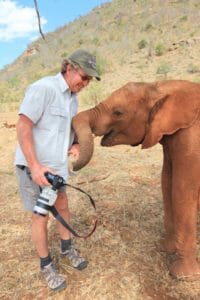 We also lost two giants of conservation in Kenya: Daphne Sheldrick and Willie Roberts. Willie (pictured left) is considered the forefather for wildlife conservation in the Maasai Mara after coming here in 1980 with a plan to farm sunflower and maize. After seeing a gap in the protection of wildlife he soon became a full-time conservationist and naturalist. In 1993 he single-handedly brokered a deal with the Paramount Chief Ole Ntutu and Former Kenyan President Arap Moi to make the first conservancy named Ol Choro Oiroua Group Ranch. He will be greatly missed, and we will be working hard to continue his legacy. In April, Kenya lost Daphne Sheldrick, an important voice in elephant conservation who is responsible for saving hundreds of orphaned elephants in Kenya and raising awareness through her media exposure about the plight of elephants in Kenya. Her legacy lives on in the amazing work the David Sheldrick Wildlife Trust does in Kenya including funding for organizations like MEP. The DSWT/MEP ranger unit in the Mau Forest has been a success and DSWT continues to protect the wild lives and wild places that Daphne loved so much.
We also lost two giants of conservation in Kenya: Daphne Sheldrick and Willie Roberts. Willie (pictured left) is considered the forefather for wildlife conservation in the Maasai Mara after coming here in 1980 with a plan to farm sunflower and maize. After seeing a gap in the protection of wildlife he soon became a full-time conservationist and naturalist. In 1993 he single-handedly brokered a deal with the Paramount Chief Ole Ntutu and Former Kenyan President Arap Moi to make the first conservancy named Ol Choro Oiroua Group Ranch. He will be greatly missed, and we will be working hard to continue his legacy. In April, Kenya lost Daphne Sheldrick, an important voice in elephant conservation who is responsible for saving hundreds of orphaned elephants in Kenya and raising awareness through her media exposure about the plight of elephants in Kenya. Her legacy lives on in the amazing work the David Sheldrick Wildlife Trust does in Kenya including funding for organizations like MEP. The DSWT/MEP ranger unit in the Mau Forest has been a success and DSWT continues to protect the wild lives and wild places that Daphne loved so much.
2019 Looking Forward
We have a very busy 2019 that includes continuing to manage our seven ranger units, intelligence unit and rapid response unit along with government partners. Additionally, the need to expand into the Loita Hills area of the Mara ecosystem continues to grow. Our rapid response unit had great success in the short amount of time they were stationed there but they also found rampant illegal logging, poaching and were mitigating human-elephant conflict daily. Funds are needed to set up a permanent ranger team in this area. Dr. Jake Wall begins his work in January and I’m really excited to have the opportunity to work with him.
I cannot thank every single supporter enough for their dedication to Mara Elephant Project. This is a passion of mine that I work really hard to make successful, but it simply can’t be without all of our conservation partners like KWS, NCG, conservancies and communities in the Mara, Tanzania government agencies and, of course, our donors. We look forward to releasing our 2018 Annual Report soon and will continue to keep you up to date on the day-to-day operations of MEP as we continue to protect elephants to conserve the greater Mara ecosystem.


